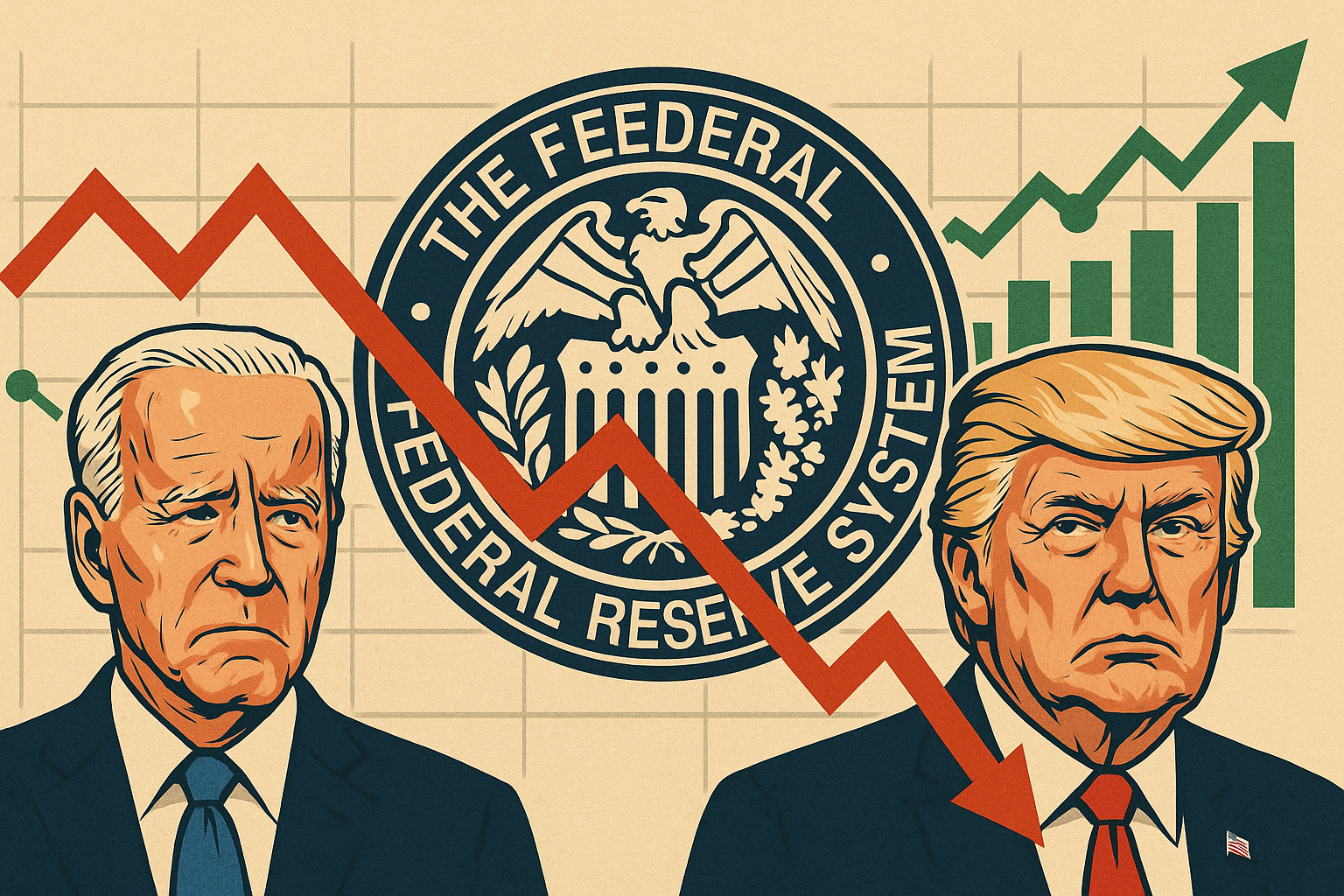As U.S. election rhetoric intensifies and inflation expectations hover, the Federal Reserve finds itself in a growing political crossfire. Yet paradoxically, the central bank’s own Financial Conditions Index shows that markets remain historically loose—more accommodative than at any time since 2021.
This divergence between political pressure to cut rates and actual market liquidity is shaping a high-stakes environment for investors. While policymakers like President Biden and former President Trump make rate cuts a campaign talking point, markets are flush with capital, borrowing is cheap, and risk assets are still rallying.
Liquidity Stays Loose Despite Hawkish Optics
According to Reuters and recent Fed data, the Chicago Fed National Financial Conditions Index (NFCI) indicates that overall financial conditions are at their softest in nearly four years. This loosening reflects a mix of strong equity markets, tight credit spreads, and higher valuations—despite the Fed Funds rate hovering above 5%.
The irony isn’t lost on analysts. “There’s a growing disconnect between policy signaling and real-world liquidity,” said Michael Feroli, chief U.S. economist at JPMorgan. “Investors are still acting like it’s QE-era easy money.”
Even Fed Chair Jerome Powell has acknowledged the challenge of aligning messaging with market expectations, stating recently that “we are data-dependent, not election-driven.”
“Financial conditions have eased significantly since late last year, which supports growth… but inflation pressures remain.”
— Federal Reserve Minutes, July 2025
Why This Matters for Investors
While the Fed may resist political pressure to cut prematurely, accommodative conditions are still fueling the equity rally. The S&P 500 is up over 18% YTD, and risk appetite remains robust in sectors like tech, cyclicals, and small caps.
Here’s why investors should take note:
- Real interest rates remain low, keeping borrowing costs manageable for corporations.
- Venture funding has picked up in Q2 for the first time in 18 months, reflecting rising investor confidence.
- Home equity loans and credit card usage are rising, a sign that consumers still have access to liquidity despite rate levels.
Yet, this optimism comes with a caveat: inflation is not fully tamed. June’s CPI reading showed a 3.2% annual rise, slightly above consensus. If inflationary pressures persist, the Fed could maintain a tighter stance longer than markets expect—triggering volatility in rate-sensitive sectors.
Future Trends to Watch
As the 2024 U.S. election looms, pressure on the Fed will likely intensify. Both parties are touting rate cuts as a means to stimulate growth and ease consumer burden—a risky political lever for an institution designed to be independent.
In the coming quarters, investors should track:
- Fed communications and dot plot revisions, especially around Jackson Hole and September FOMC.
- Inflation expectations in bond markets, such as the 5-year breakeven rate.
- Shifts in the yield curve, which is currently steepening—often a sign of improving growth expectations, but also potential inflation risk.
Key Investment Insight
Investors can lean into this environment by favoring cyclical sectors like industrials, financials, and consumer discretionary—which benefit from easier conditions. Equity exposure remains attractive as long as liquidity remains ample, but hedging against inflation surprises with commodities or TIPS may be prudent.
Growth-oriented stocks and rate-sensitive assets will likely continue to outperform—unless the Fed is forced to shift unexpectedly due to rising inflation or external shocks.
While politics may call for lower rates, the market’s current reality says otherwise: liquidity is flowing, and risk is back in vogue. The critical balance now lies in watching the Fed’s next move—and whether political heat overrides policy patience.
Stay plugged into MoneyNews.Today for daily investor briefings, macroeconomic insights, and data-backed analysis that gives you the edge in shifting markets.





